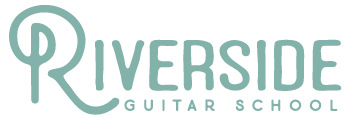Learning how to practice is probably the most difficult thing to learn, yet most critical part of growing as a musician. I am sharing my thoughts and experiences with practice to try to make it a less daunting task.
Routine
It’s important to have a routine or habit of practice. If you can manage to build small practice sessions into your daily or weekly schedule, you will notice huge strides of progress in a relatively short amount of time.
Your practice time could be early in the morning, right after school or work, or after dinner – but it should be a time you have consistently available to yourself unobstructed. To sit down and start playing without having to “decide” to do it is more helpful than you might realize.
The amount of time matters less than the consistency with which you practice. I tend to practice in bursts of about 20 minutes. But If I can’t do 20 minutes, I do 10, or even 5. 5 minutes a day is better than nothing. And you can still get a lot done in 5 minutes – if you practice efficiently.
Specificity is Efficiency
When I was growing up, I would never actually practice. I would just play. I would sit down and play through a piece start to finish, never stopping to fix mistakes (and if I did stop, I would always start back at the beginning of the piece). This is the exact opposite of what I should have been doing.
Practice with a specific goal in mind. A hyper-specific goal. One phrase, one measure, or even just jumping accurately between two notes. This is where the real learning happens.
I start with identifying an error – say there was a huge, noticeable, ugly mistake in measure 6. That’s fine. In fact, that makes the first step very easy. We can then isolate the error. Work on measure 6 and only measure 6. You may find the error is smaller than the measure, maybe the 2nd and 3rd notes of the measure. Work on repeating those two notes until you can’t get it wrong (I find it only takes about 5-10 repetitions on average). Then work your way outwards, until measure 6 is accurate. Finally, integrate. Slowly string together longer chunks of music by repeating this process throughout the entire piece. Add measure 7 to measure 6, then start back at measure 5 and play through 7, stopping to isolate and resolve mistakes as you find them. It is a tedious process, but the most efficient way of learning.
Do What Works for You
Practice is an extremely individualized endeavor. Whatever works for you is the best way to practice.
As hard as I have tried, I have never been able to keep a journal or a practice log – something I always hear as advice for creating a good practice habit. Many people find them indispensable. But I can’t do it. However, I have discovered a way that works for me. I tend to write notes directly onto my scores, making use of checkboxes, arrows, circles, drawings, colored pencils and highlighters – anything that catches my attention and reminds me of what to do next. I also try to keep my current music on my music stand or in my bag as much as possible, so I see it, which helps remind me to practice, as well.
Some people take meticulous notes in a notebook, or use piles of sticky notes, or scribble all over their music. It might take time and experimentation to understand how you operate, but whatever it takes to get you to practice is what you should ultimately do.
Patience
Finally, it’s important to be patient with yourself and remember that progress takes time. It’s natural to get frustrated—learning a musical instrument is just plain difficult. Be kind to yourself and realize the immense difficulty of the task you’re pursuing. It’s ok to walk away from your instrument for a little while – it will be there when you’re ready to try again.

13 thoughts on “Vincent’s ideas for effective practice”
Comments are closed.